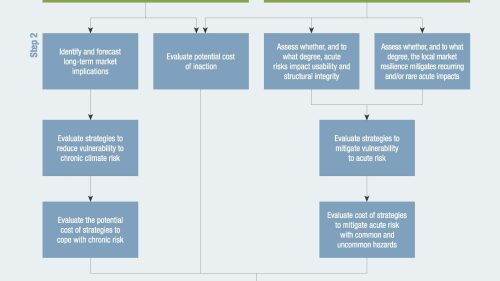Two key apartment market indicators from the National Association of Home Builders this week show continued improvement through the second quarter, and experts said they are optimistic that a recovery is gaining traction. The statistics showed an increase in production and a continued drop in vacancy rates.
The Multifamily Production Index (MPI), rose for the eighth consecutive quarter to 54 for the second quarter of 2012, its highest reading since the second quarter of 2005. The Multifamily Vacancy Index (MVI) dropped back to the same level sustained all through last year.
“The strength of the MPI suggests that multi-family production is likely to increase somewhat going forward,” said David Crowe, NAHB chief economist. But ULI member Richard Dishnica of the Dishnica Co. in Port Richmond, Calif., cautioned against reading too much into the indices: “Every single submarket is unique to itself,” said Dishnica, whose firm concentrates on infill apartment development in the San Francisco Bay Area. “Of the nine Bay Area counties, market-rate multi-family production is concentrated in San Mateo, Santa Clara, and San Francisco.”
Dishnica also suggests, as does the MPI, that the mix of new development is “heavily weighted toward” market rate units. “There’s no question production has picked up in many markets, but most of it is in market-rate rentals.
Chris Van Ens, vice president of investor relations at UDR, the Littleton, Colorado-based real estate investment trust which owns and operates some 200 apartment communities totaling nearly 55,000 units throughout the country, said the MPI shows what his company has been seeing. “We’re clearly up off the trough,” Van Ens said. “And we’re not at long-term averages yet.”
Still, he added, while the sector is “clearly improving,” gains are very much market-based. He mentioned the Bay Area, Boston and New York City as particularly strong locales. “We’re even starting to see some pickup in the more housing-heavy markets in Florida and Texas,” he said. But voiced concern that too much supply might already be in the pipeline in places like Seattle, Austin, and inside the Washington, D.C., Beltway.
Analysts at NAHB say both the MPI and MVI have performed well as leading indicators of Census Bureau figures for apartment starts and vacancy rates, and offer a glimpse into the market one-to-three quarters in advance of government statistics. The indices have been published on a quarterly basis since 2003.
Multi-family production has recovered significantly to the current run rate of just over 200,000 annually, up from a historic low of 110,000 starts in 2009 and 2010. But prior to the 2008 downturn, apartment starts were at the 300,000-a-year level, so “there is room for further improvement” before production returns to “normal, sustainable levels,” Crowe said.
The MPI is a composite measure of builder and developer sentiment about current conditions in all three components of the multi-family market – low-rent units, market-rate units and condominiums on a scale of zero to 100. Any number over 50 indicates that more respondents report conditions are improving than deteriorating.
In the second quarter of 2012, the overall MPI rose to 54, its highest reading in seven years. The component that tracks builder-developer perceptions about market-rate rentals hit 63. The condo element reached 41, its highest reading since the fourth quarter of 2005, while the low-rent part of the index hit an all-time high of 61.
The MVI, which measures the industry’s perceptions about occupancy, increased five points in the second quarter to 36. After peaking at 70 in the second quarter of 2009, the index declined consistently in 2010 and held steady at 35 or 36 in each quarter of 2011. With the MVI, lower numbers indicate fewer vacancies.
While such national numbers can be helpful, Van Ens stressed that they “could give you a distorted view” of local markets. “It’s the same as with the monthly jobs report,” Van Ens said. “The numbers are strong in some places and weak in others. You really have to get a lot more granular. This really is a very localized business.”
Overall, though, W. Dean Henry, chair of NAHB’s Multifamily Leadership Board and CEO of Legacy Partners Residential in Foster City, Calif., said the two indices indicate “a path of steady recovery” as construction tries to keep pace with current consumer demand. And Van Ens, for one, doesn’t see any fall-off in that.
“The apartment market continues to be robust,” he said. “We haven’t seen any slowdown in that yet. Demand won’t stay as strong; it won’t go back to the way it was in the mid-2000s. But I don’t think the pendulum will swing back to homeownership anytime soon.”
Sandra Robles, research director at the ULI Terwilliger Center for Housing, agreed. “Working families continue to be priced out of the housing market due to stringent mortgage credit qualifications, strengthening the demand for multi-family rental construction.” Robles said.




